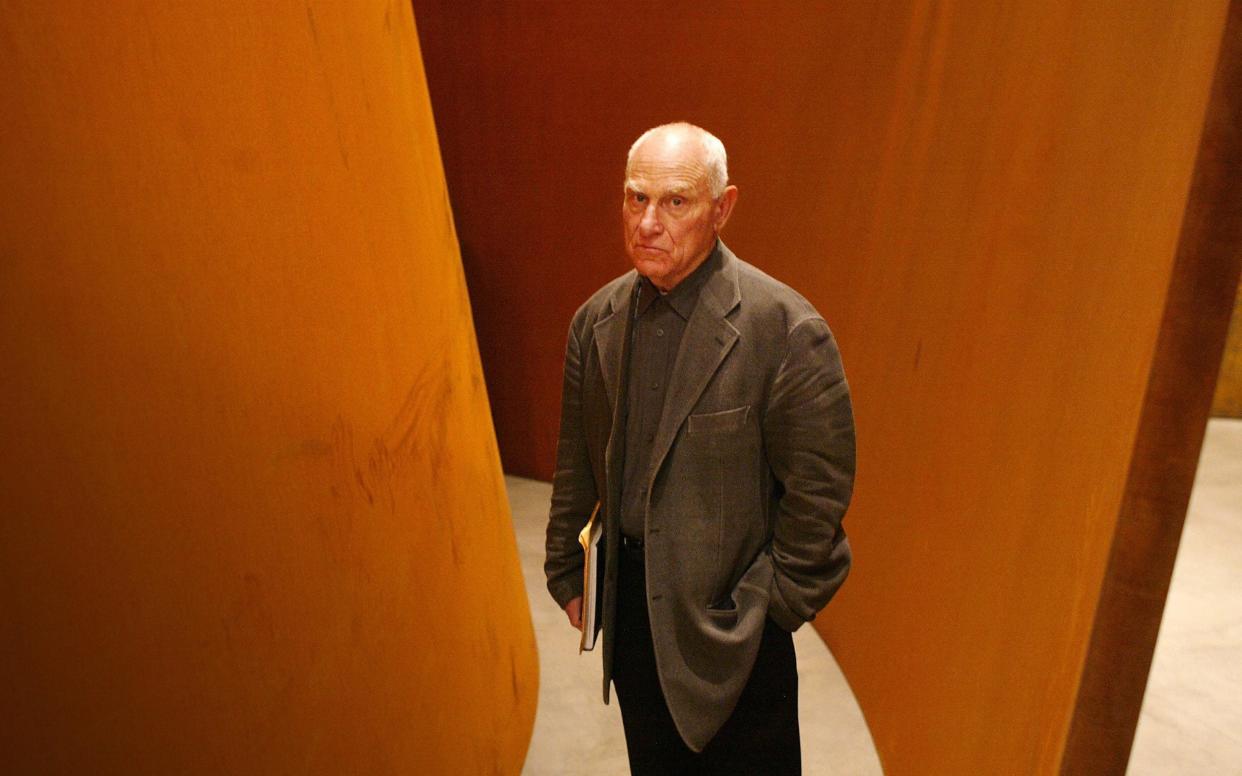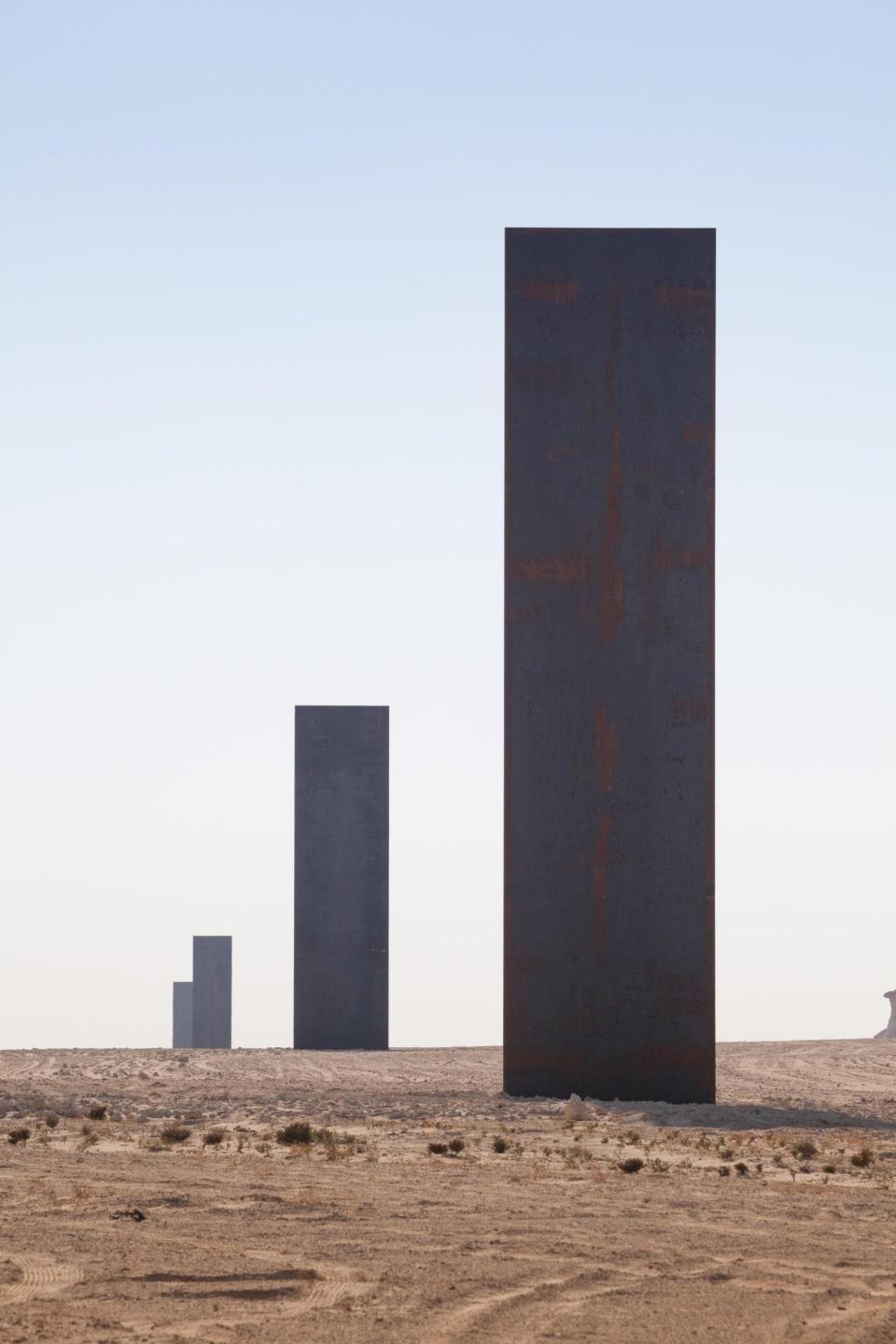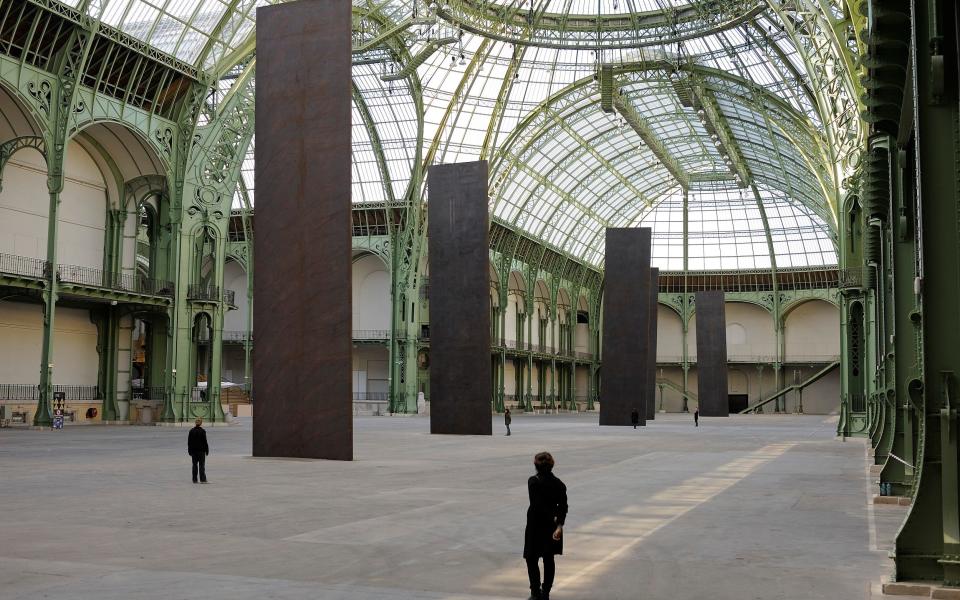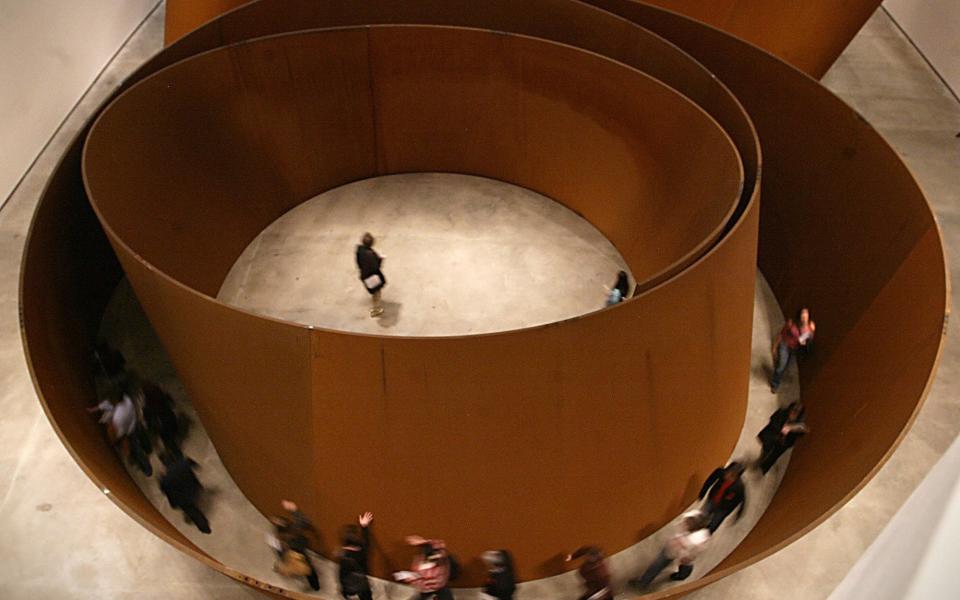The magnitude of Richard Serra’s art put Fourth Plinth fripperies in the shade

- Oops!Something went wrong.Please try again later.
Last November, at the end of an unrelated work trip to Doha, I found myself in a 4-by-4 driving through the pre-dawn Qatari desert, on my way to encounter a monumental sculpture by the American artist Richard Serra, who died earlier this week, from pneumonia, at the age of 85. Fitting in this art pilgrimage before my flight home involved getting up in the middle of the night, and I wasn’t sure beforehand if the effort would be worth it. Of course it was, many times over, as my experience of Serra’s massive metal sculptures should have taught me. The man was a magician.
Set within a nature reserve in western Qatar, East-West/West-East (2014) consists of four colossal steel plates, arranged irregularly in a line for around half a mile, and rising to almost 55ft in height, so that their tops are level with each other, as well as the gypsum plateaus on either side. Initially, they look like ancient stelae, or upright gravestones, each with the silhouette of a skyscraper, a little like those extraordinary memorial obelisks to be found in the city of Aksum in Ethiopia. In the half-light, each had the quality of an impenetrably black portal leading to the underworld, or another dimension.
From the front, they appear ominous and brooding and impossibly heavy (how, you wonder, can they stand so tall?); if one toppled over, you’d be squashed in an instant, like a swatted fly. Seen, though, from the side, where the plates are only inches thick, they momentarily seem – abracadabra! – to vanish.

Beholding this effect, which is so characteristic of the sculptor’s work, I was reminded of walking with Serra, in 2008, through the “field” (as he described it) of five similarly immense and rectangular steel plates installed, at 100ft intervals, along the central axis of the Grand Palais exhibition hall in Paris. This is where, as a young artist during the Sixties, accompanied by his friend, the American composer Philip Glass, he’d hung out at La Coupole, and stared, groupie-like, at Alberto Giacometti when he turned up, late at night, with plaster dust still in his hair. (Compared with the Grand Palais, Serra told me, Tate Modern’s Turbine Hall, which itself has been the site of various spectacular sculptural commissions over the years – although never, to the shame of the gallery’s managers, anything by him – was “a little banal”.)
Emanating intensity, his grey-blue eyes blazing like a gas-burner’s flame, he pointed out various aspects of Promenade (as the Parisian piece was titled, typically inviting the viewer to walk around it to experience it in full) – noting, for instance, that the plates felt “weightless” and seemed to contain a sense of “uplift”. As we lingered by the side of one of them, it suddenly appeared like nothing but a dark line extending upwards in space, and he looked at me with delight: “Seventy-five tonnes: gone!”

This is what Serra, who will be remembered for radically extending post-war sculpture’s “language of form”, as he put it, could do: manipulate materials even as obdurate as construction-grade weathered steel, so that, transformed, they acquired counter-intuitive properties, such as softness, suppleness, even an impression of weightlessness. They provoked in the viewer a sensation of queasiness and awe, by distorting their sense of the surrounding space.
This will be familiar to anyone who has experienced his masterpiece, The Matter of Time (1994-2005), at the Guggenheim Museum Bilbao (a series of eight complex sculptural forms, together weighing more than a thousand tonnes, which visitors can enter and walk around, if they dare, like Theseus passing into the labyrinth); or Fulcrum (1987), a 56ft-high cluster of five pieces of steel seemingly propped together outside London’s Liverpool Street railway station, like a pile of rusty kindling left by a giant robot.

For commuters scurrying past, there’s always the nagging, irrational concern that the whole thing might collapse. Inspired by a minaret, a similar piece, 7 (2011), this time 80ft tall, and installed outside Doha’s Museum of Islamic Art, is likewise in dialogue with its surroundings – here, the glittering high-rises across the bay.
Compared with Serra’s abstract work, which radiates authority, so much contemporary public art seems like frippery – such as some of the sculptures selected recently to occupy the Fourth Plinth in Trafalgar Square, or The Meeting Place, that trite, 30ft-high bronze oddity representing an embracing couple inside St Pancras. Usually, a piece by Serra appears simultaneously industrial (many of his elliptical sculptures evoke the hulls of tankers, which may reflect an inspirational childhood memory of a ship being launched) and primeval, timeless, like a standing stone.

For his installation in Qatar, though, Serra left behind the city, and embraced the wilderness. The magnitude of his work only increased. As a coral glow appeared and the sun began to emerge above the horizon – first slowly, then swiftly – I scrambled up one of those plateaus to watch the celestial drama.
What I most recall is how the sun, while still a lazily rising, low-lying pinkish-red orb, seemed to be somehow tethered to Serra’s slabs, moving in relation to them. This was, in visual form, the music of the spheres; those blocks could have been the bars of Apollo’s xylophone, perhaps. It requires immensity of imagination – and chutzpah – to harness, even if only illusorily, the cosmic power of our nearest star. “I don’t think you’re going to see the likes of it again,” Serra proudly told me in Paris, referring to Promenade. The same could be said of him.

